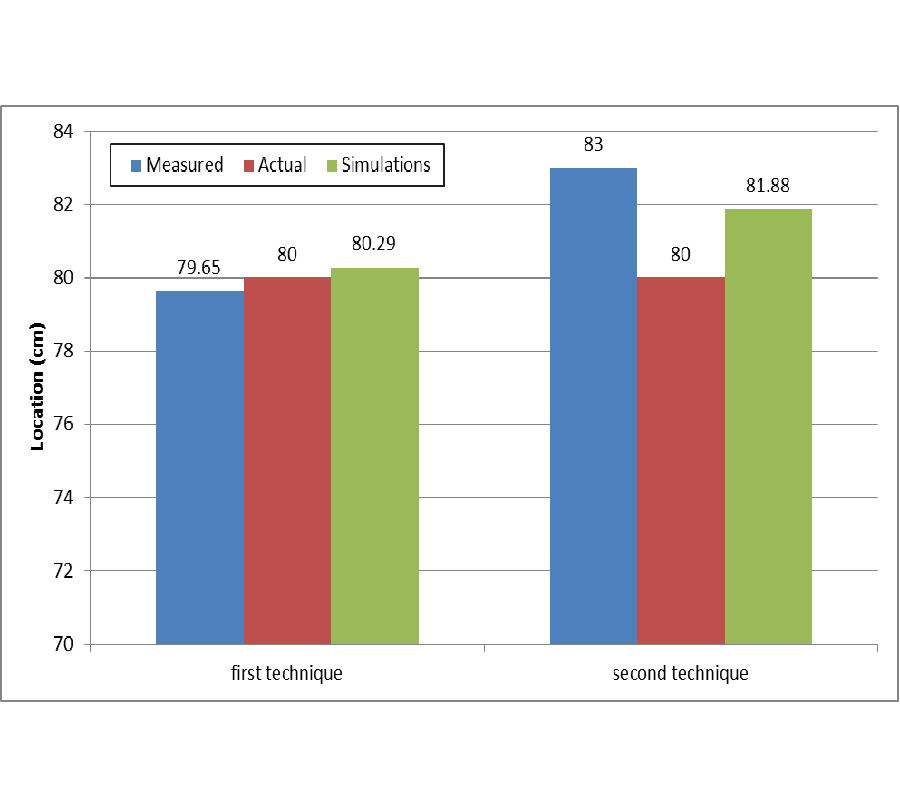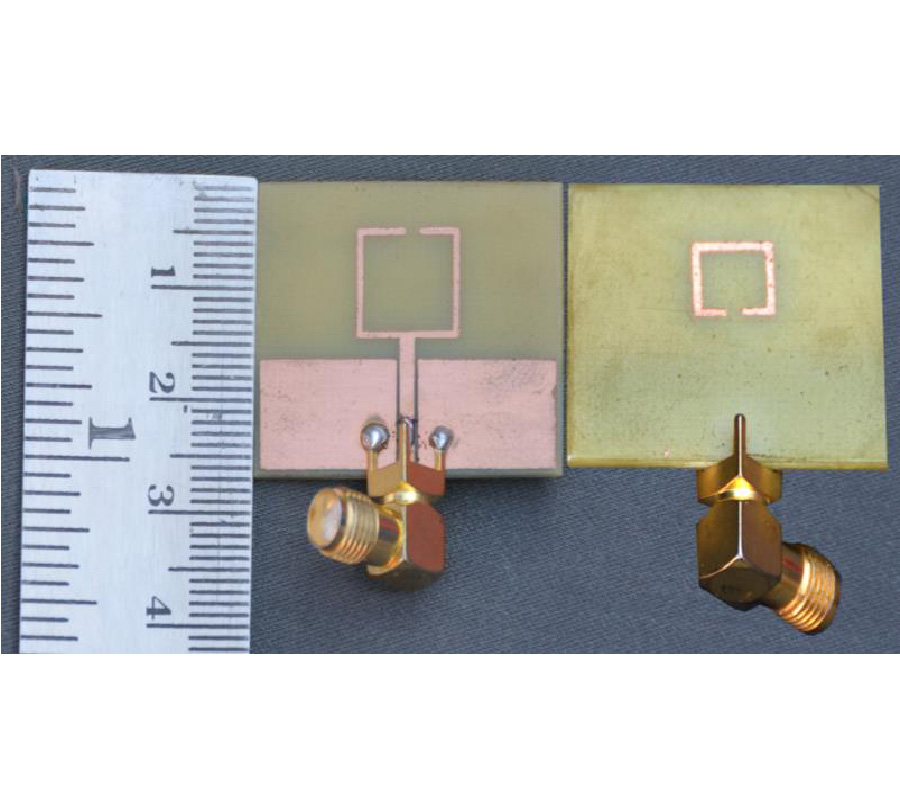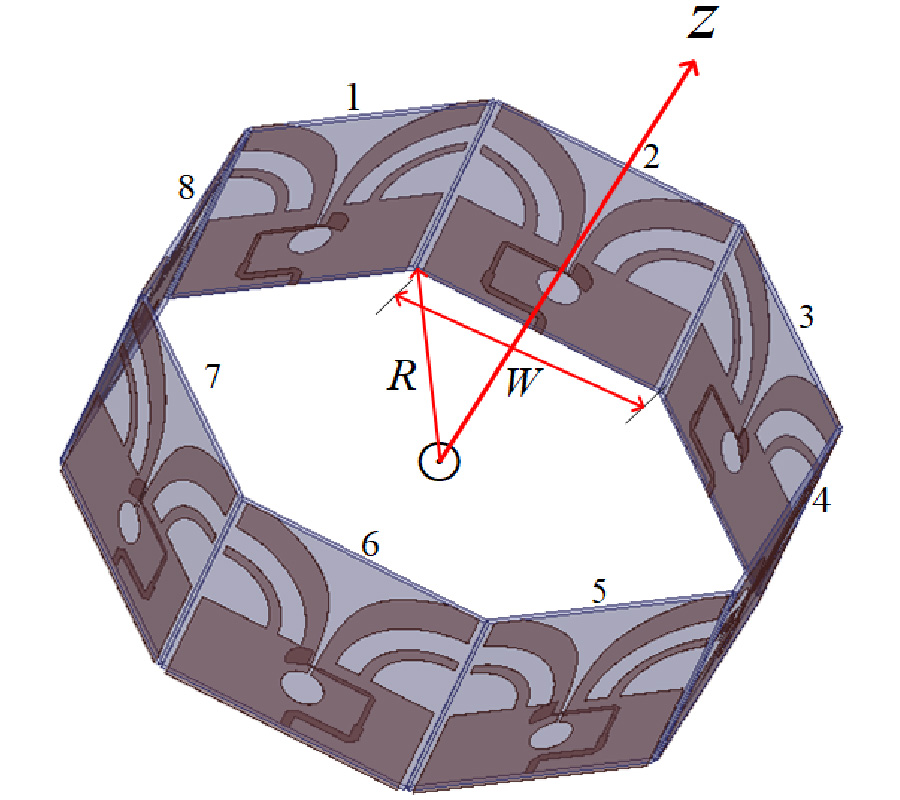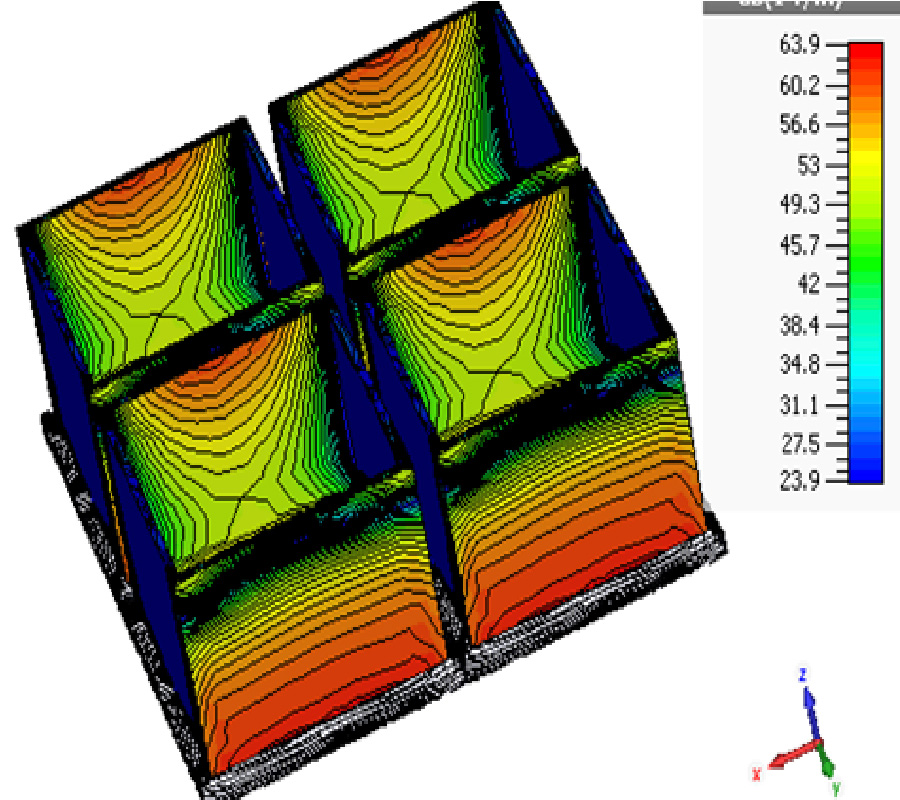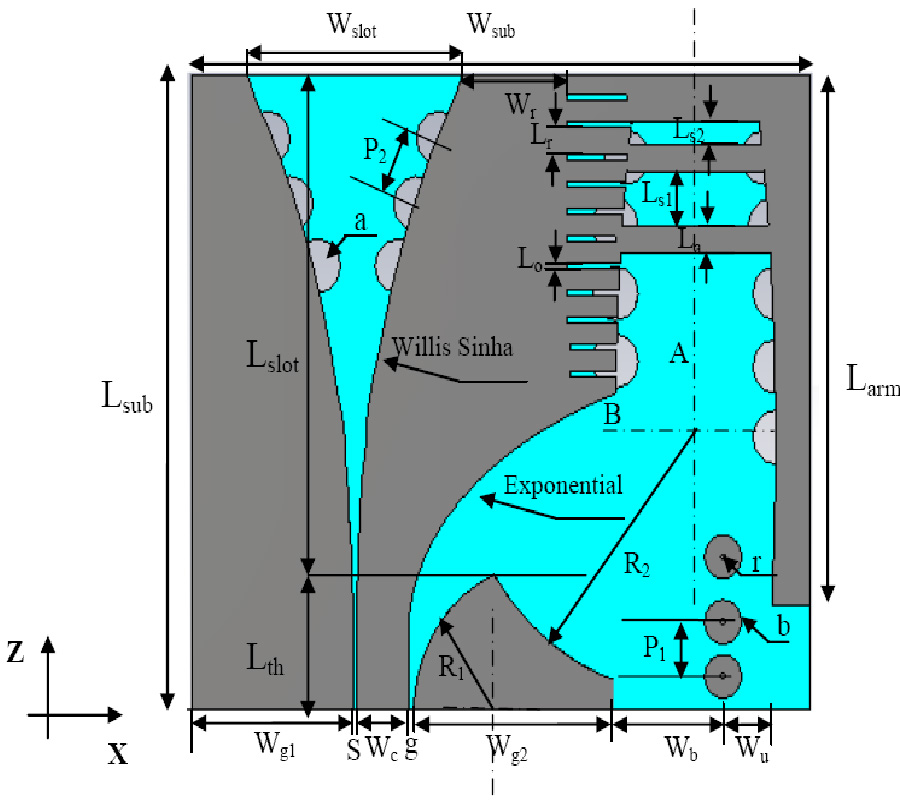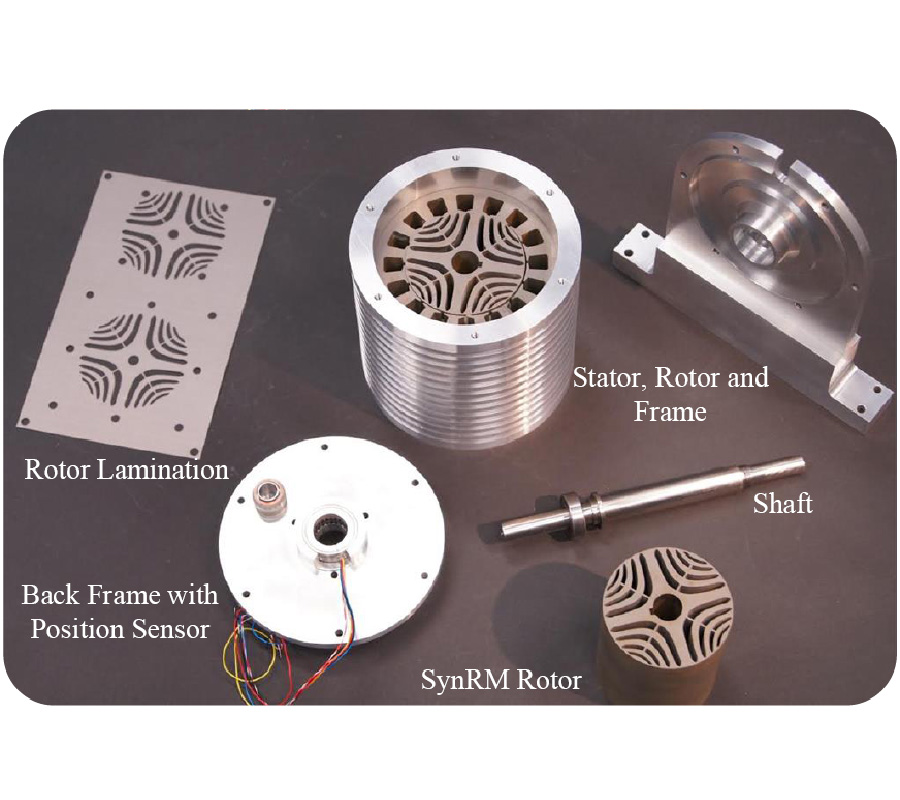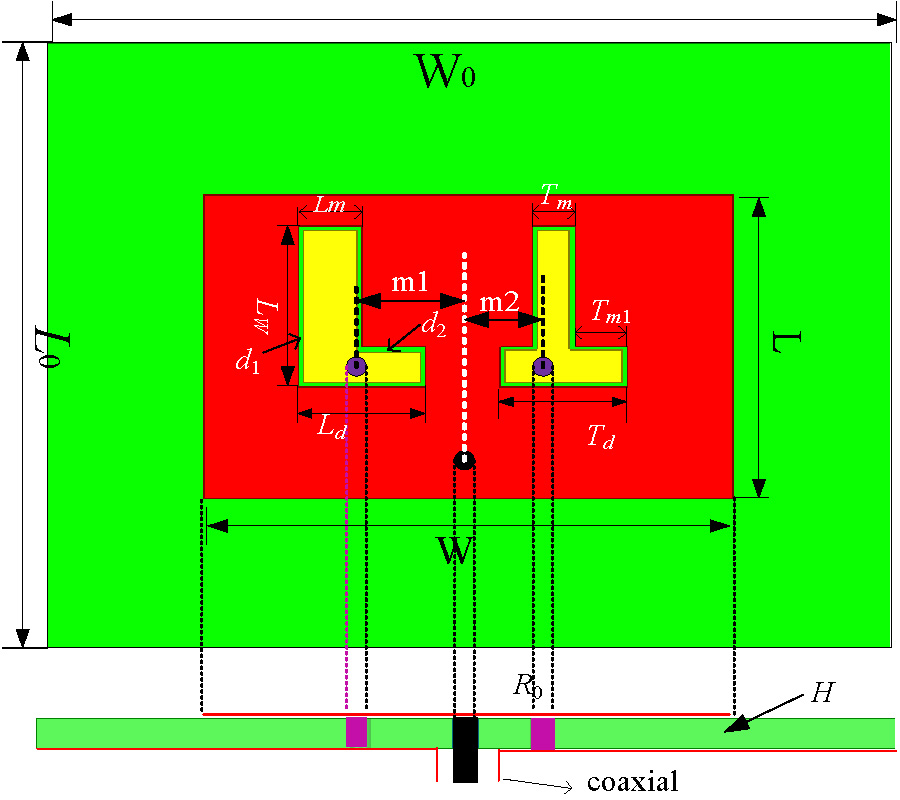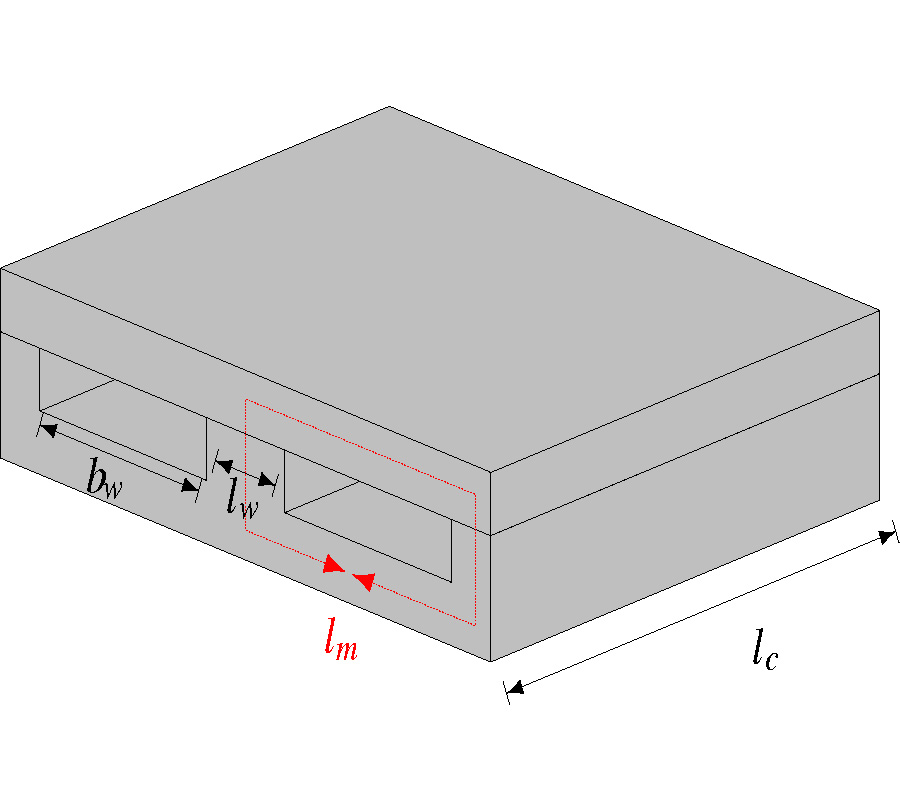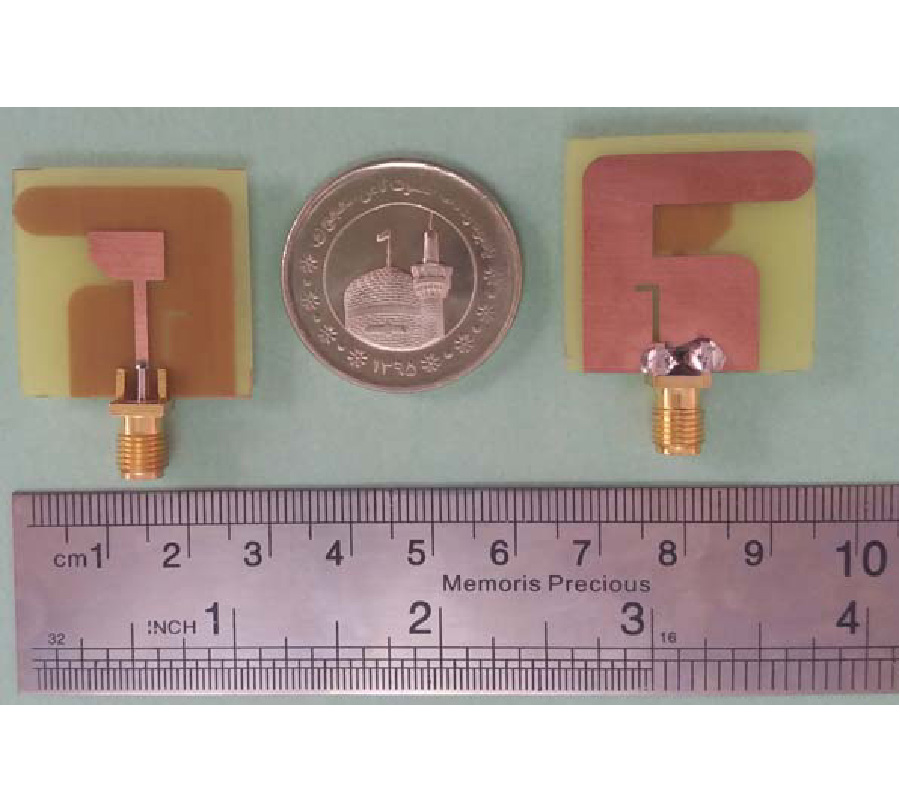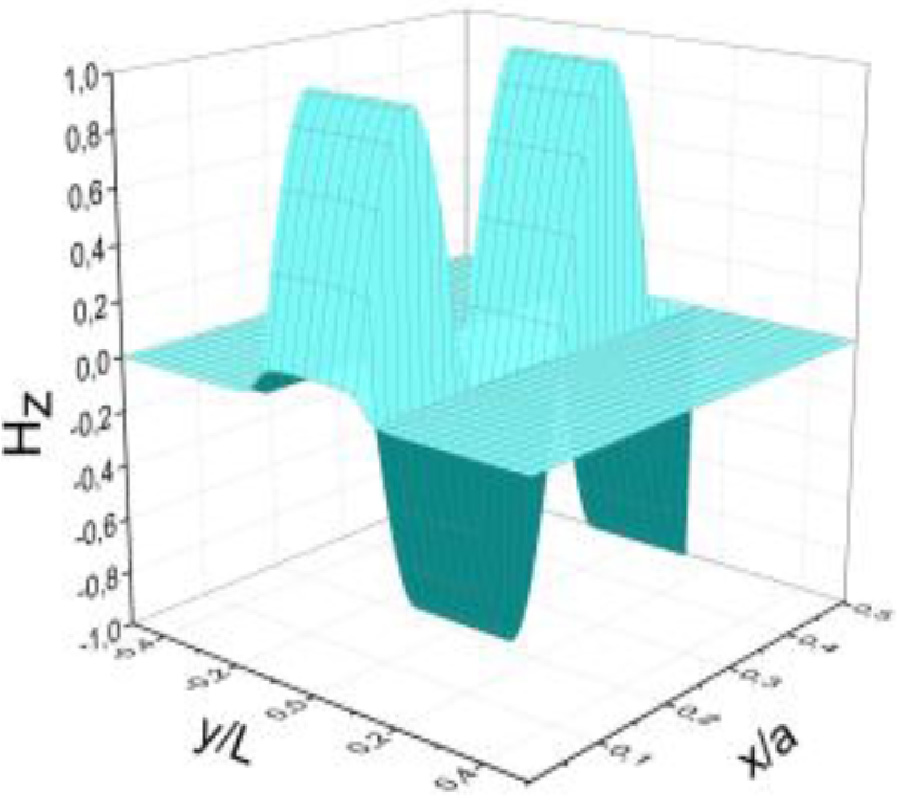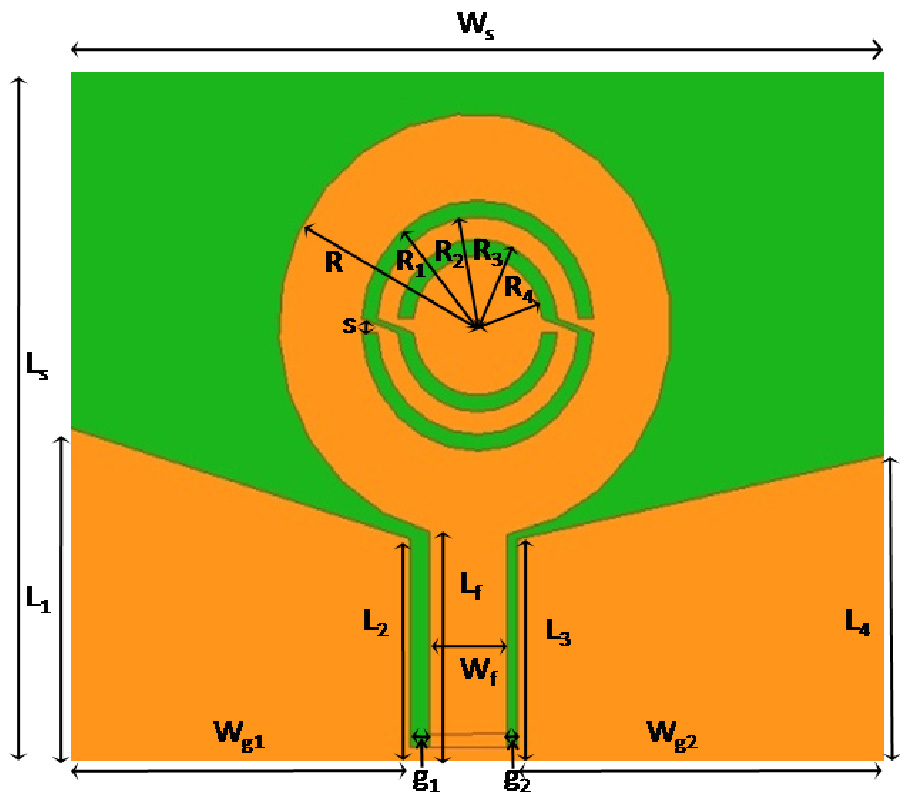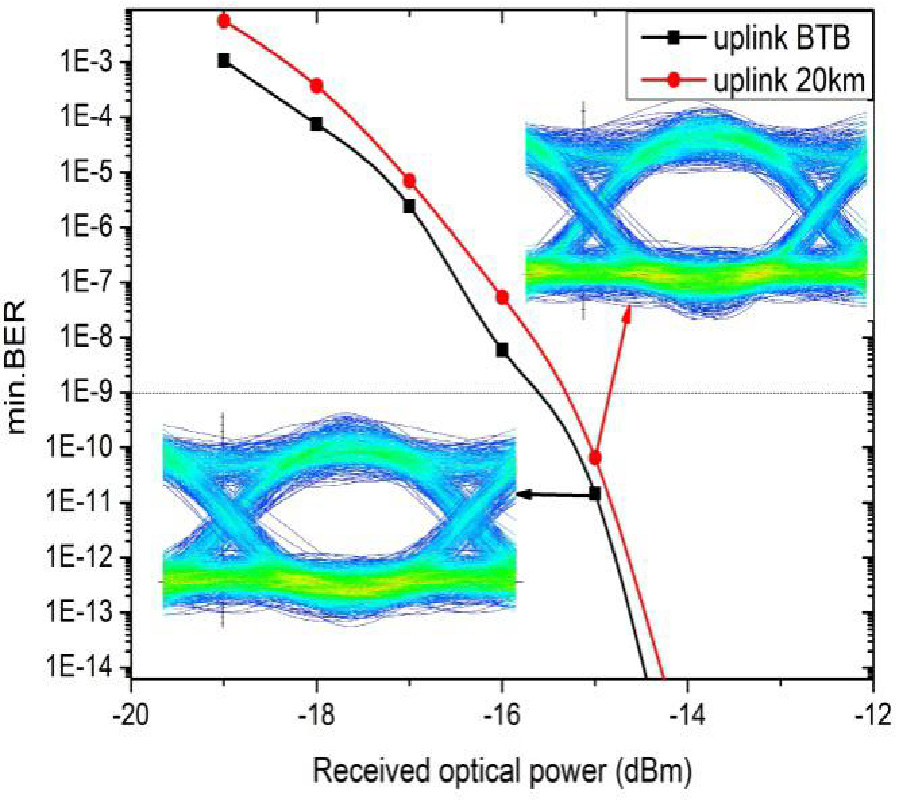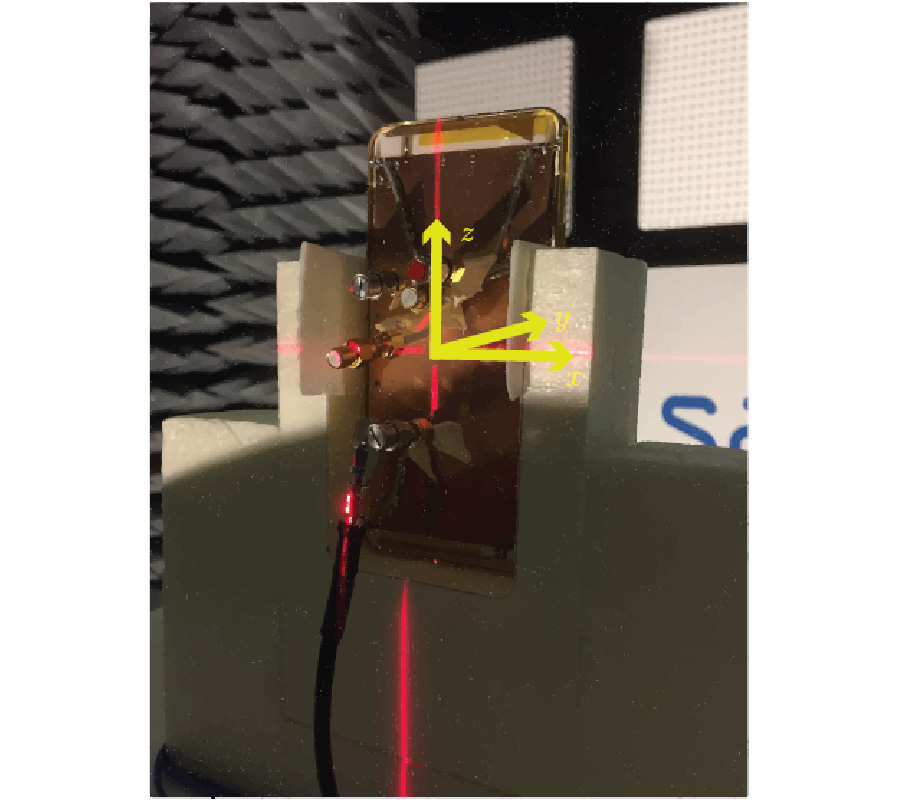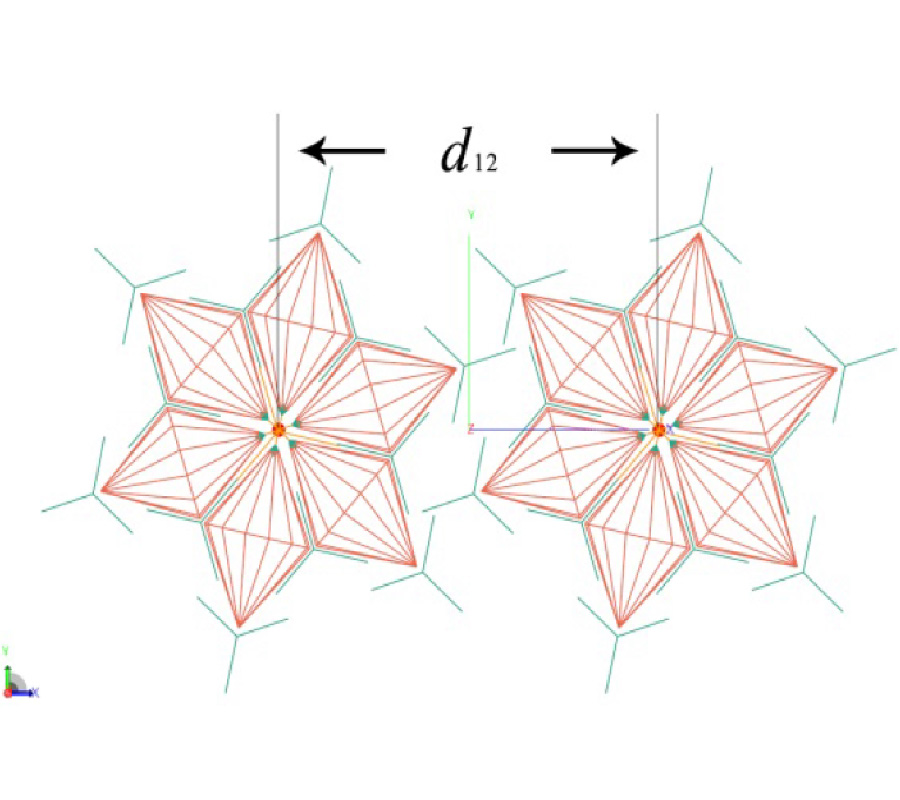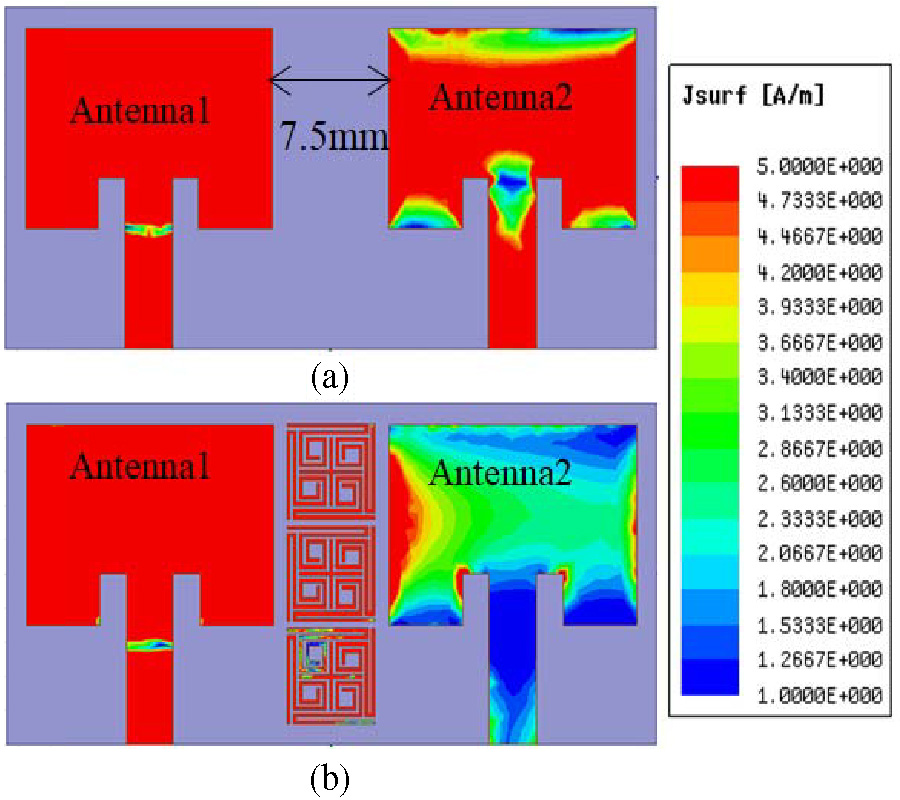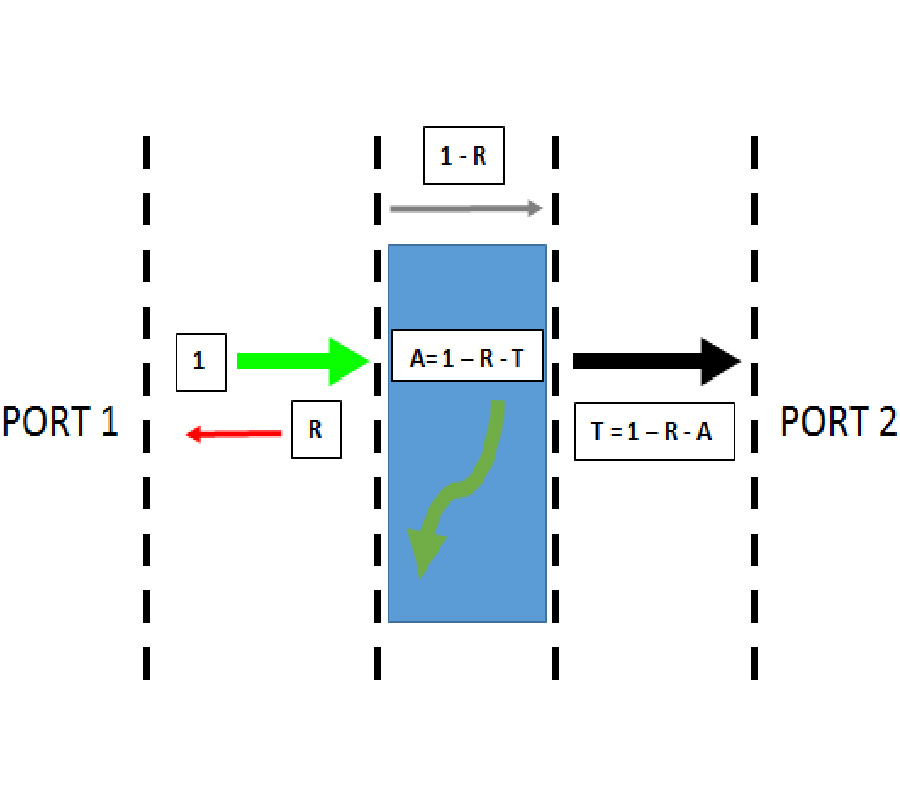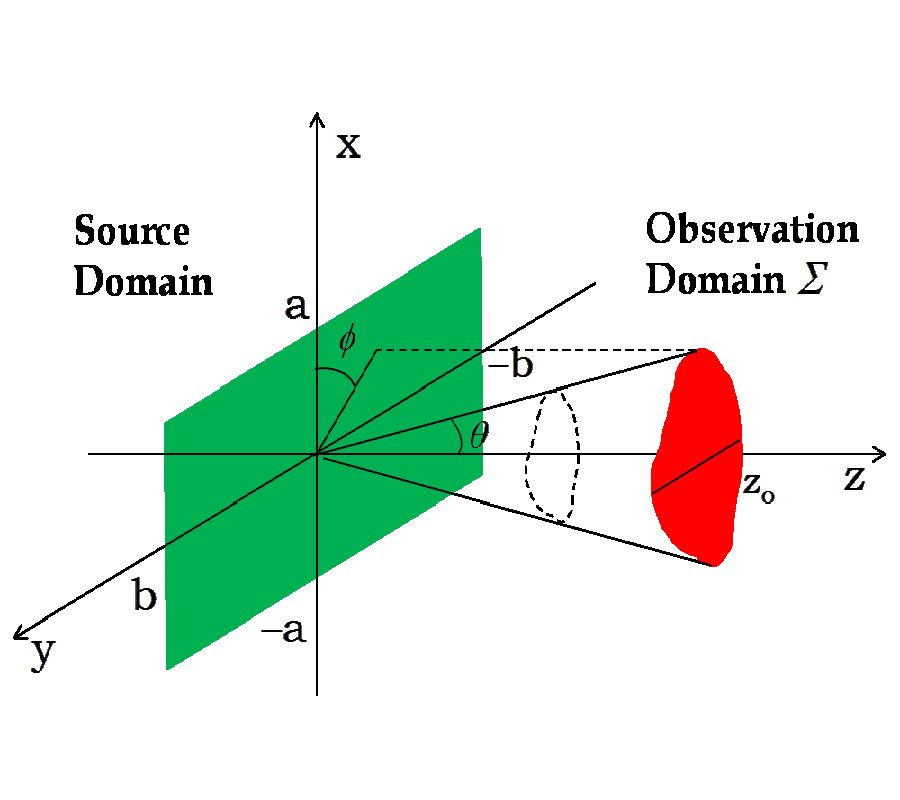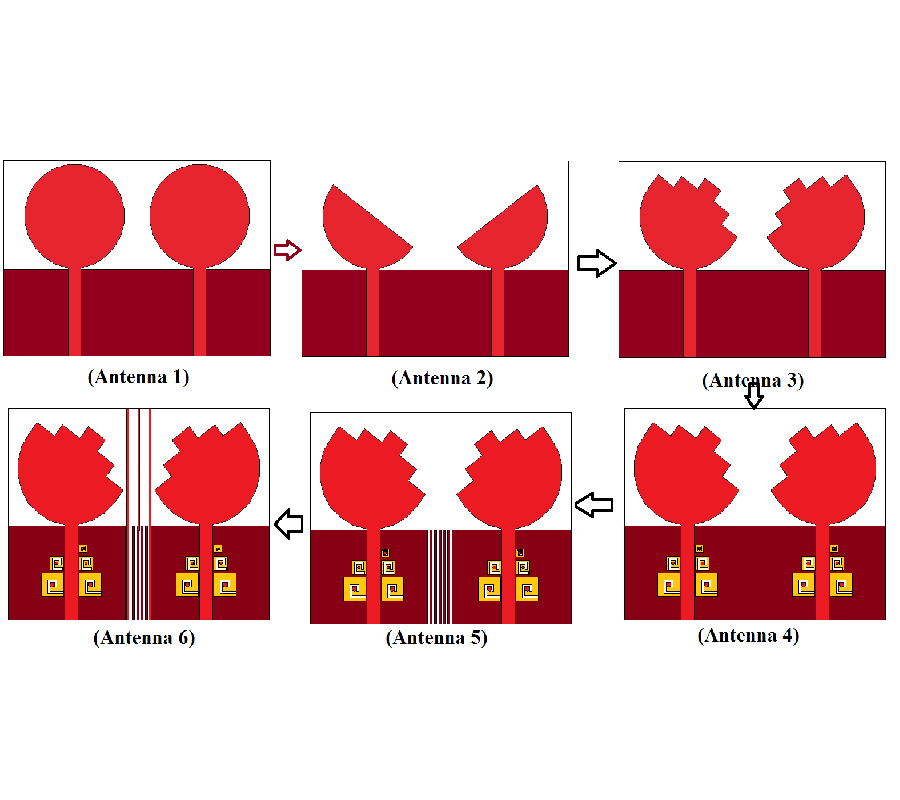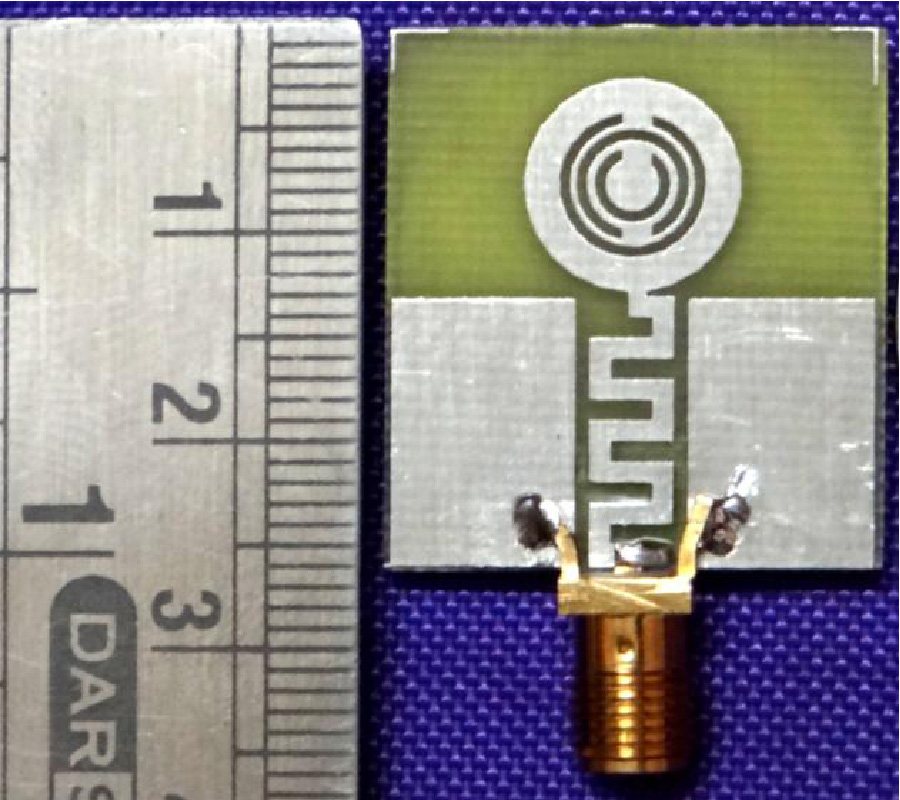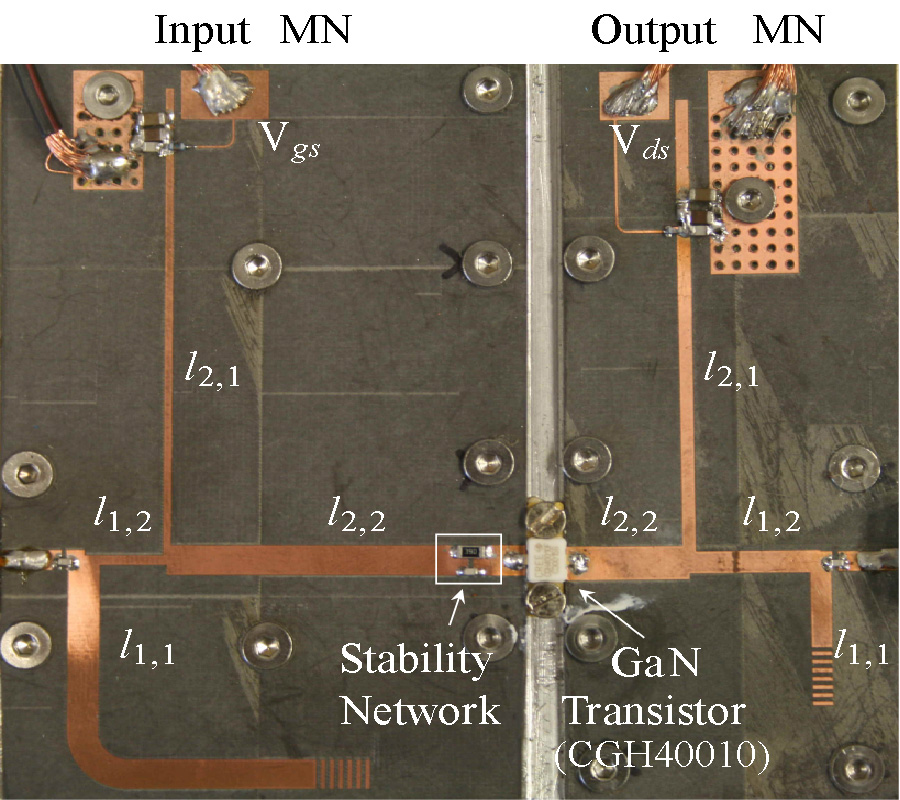Triple Band Notched DG-CEBG Structure Based UWB MIMO/Diversity Antenna
Naveen Jaglan,
Samir Dev Gupta,
Binod Kanaujia,
Shweta Srivastava and
Ekta Thakur
A MIMO/Diversity antenna with triple notch characteristics is proposed in this article. The proposed antenna has triple notches in the WiMAX band (3.3-3.6 GHz), WLAN band (5-6 GHz), and X-band satellite communication (7.2-8.4 GHz) band. Defected Ground Compact Electromagnetic Band Gap (DG-CEBG) is a design used to accomplish band notches. Defected ground planes are utilised so as to achieve compactness in conventional EBG structures. The proposed WiMAX band, WLAN band, and X-band satellite communication band DG-CEBG structures show a compactness of around 46%, 50%, and 48%, respectively, over a conventional EBG structure. In these structures, decoupling strips and a slotted ground plane are used to enhance the isolation between two closely spaced UWB monopoles. The individual monopoles are 90° angularly separated with a stepped structure which helps to reduce mutual coupling and also contributes towards impedance matching by increasing the current path length. |S21| or mutual coupling is found to be less than 15 dB over the whole UWB frequency range. The Envelope Correlation Coefficient (≤0.5) is within the acceptable limits over the whole UWB frequency range. Notched frequency depends on the parameters of DG-CEBG structures; when there is a change in these parameters notch frequency is also changed. A low cost FR-4 substrate with thickness (h) = 1.6 mm, permittivity (ɛ) = 4.4 and loss tangent (δ) = 0.02 is used for the proposed antenna, and it has a compact size of 58×45×1.6 mm3.
